
"When I get conflicting information, I always go to the real answer from Mr. Dowding. Your books and information have been a huge inspiration in my life. Thank you. We are in the third year of building a huge garden using many of your methods." (Midsummer night, comment on You Tube 07/18)
I develop timesaving methods of organic, and especially no dig gardening. I share with you the reader and viewer, methods I discover for quicker, more efficient gardening. No dig is the main one, also I trial and publicise new ways of growing, picking, marketing salad leaves, and of multi-sowing vegetables.
Since 1982 I have created and cropped four no dig market gardens on different soils: stony, silt, white and ordinary clay. In the 1980s my garden covered 7.5 acres (3ha) of no dig beds and was less intensive than now. The growing methods are as applicable for small areas as large ones.
Currently I crop intensively 0.33 acres/1300 square metres in Somerset, SW England, for local sales of salad leaves and vegetables.
Other strings to my bow are writing - 11 books and two more soon, articles for national gardening magazines, and regular uploads of videos to my You Tube channel. Plus I give talks and courses at home and abroad.
Background story
I grew up on a dairy farm in Somerset, with no interest in cows. Fortunately I was encouraged by my parents to look elsewhere for a career. Yet after graduating from Cambridge University with a geography degree in 1980, I felt a pull back to the land, exactly what my father had not wanted.
Why so? I had become interested in nutrition at Cambridge, and became a vegetarian too when that was decidedly an odd path to follow. My increasing desire to grow healthy food was fuelled by worries about the declining nutritional content of food, and rising residues of toxic chemicals. I lived in the farming world and saw the trends.
I joined the Soil Association, had my leg pulled by friends and responded to an advert for a job in Scotland’s Hebridean islands, where I arrived in March 1981. After a year of maintenance work and gardening at the Argyll Hotel on Iona in the Inner Hebrides, where home grown organic vegetables were an important part of the menu (and still are, wind permitting), I decided to have a go at commercial organic vegetable growing in an old orchard on the farm.
First market garden 1982-90
This was a marginal thing to do in the early eighties when farmers were still being encouraged towards quantity more than quality, with memories of war-time food shortages still prominent. Consideration of the environment was minimal, and few people were keen to buy organic food. Yet it felt the right thing to do, I saw the connection between soil health, plant health and human well being.
Early results from the acre and a half of organic beds were encouraging. My mother was worried about who would buy all the vegetables but, strangely enough, there was always a telephone call when crops were ready (she kindly answered them!). Also in 1983 I started a box scheme, perhaps the first in the country, just six boxes in that first year.

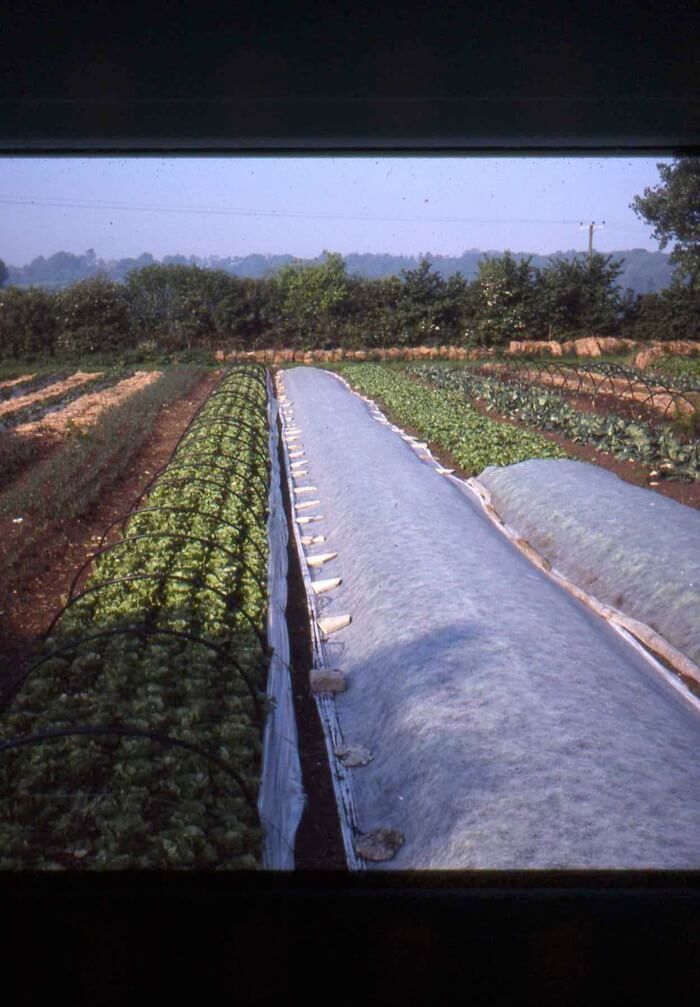

Over the next eight years I kept taking in more land and built up a large market garden, selling both locally in boxes and through a market stall, as well as to shops in Bristol, Bath and London. Every March I was joined by three or four apprentices, until the autumn. For a while I was member of a cooperative of growers, selling to supermarkets, until their demands made it impossible to continue.
My land was no dig, after the initial rotovating to create clean soil: at that time I knew no other way. But I was happy to be no dig, although the quality I mentioned most was organic.[caption id="attachment_48021" align="aligncenter" width="700"]

In 1988 I bought a second hand greenhouse to expand the cropping range, Bill fits the final glass[/caption]
A small farm in France 1992-97
However I had slogged myself to a standstill, contracted type 1 diabetes and by 1990 was ready for new adventures. I had kept the diabetes at bay for a year in 1990 but needed to make small injections of insulin by December. Everything was changing: my father had died and left an inheritance, so I found a couple to run the holding from 1991, until their first baby and they stopped in 1993.
One thing led to another and in 1992 I spent the spring creating a market garden in deepest rural Zambia, until I was accused by the district commissioner of emerald smuggling, and had to leave. I was allowed into Kenya and checked out an organic farm-school in Kitale, however I was homesick, and contracted malaria too.
This persuaded me that Europe was home and with my prospective wife Susie, we found a 40 acre Gascon farm (SW France) of terrible soil in 1992, from where we married. Soon we started a family too.

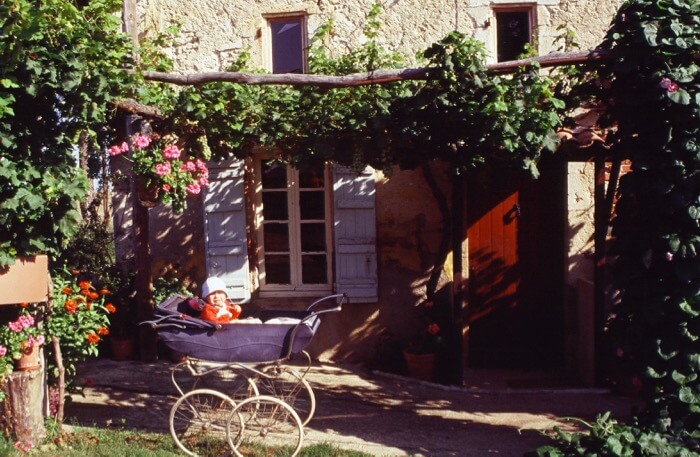

The soil was white clay, known locally as boulbene and spurned by local farmers. They found it funny that gullible English people had bought this unproductive farm, but they expressed gratitude that we were not Parisians.. Meanwhile the difficult soil responded well to my no dig approach, and there was surprise every week at the Astaffort market when I appeared with lovely vegetables.
We ran a largely self sufficient smallholding, including vines which we turned into wine at the farm, and the vegetables we sold in the local market at Astaffort. Two children and five years later we decided to return to Somerset and a new chapter began, initially with the birth of another son, on my birthday. This was Edward!
Back in Somerset at Lower Farm 1998-2012
I restored some of the barns at Lower Farm while training as a kinesiologist. This seemed to be going well until, just after the last exam, I was told off for having dirty fingernails, not good when treating people.However with new findings on the value of soil microbes, I think there was healing potential there!
Always the soil kept pulling me. An abundance of my vegetables led to selling a few boxes again by 2000. Lower Farm is clay soil and one of the quarter-acre plots had been compacted by heavy machinery, before I converted it to no dig vegetables (photo right below). I spread just 4cm/1.5in compost on top of the sticky, hard clay and, it took a year of poor crops for the soil to recover, but improvement was steady. Such that in year two the parsnip harvest was impressive, both in length and size.
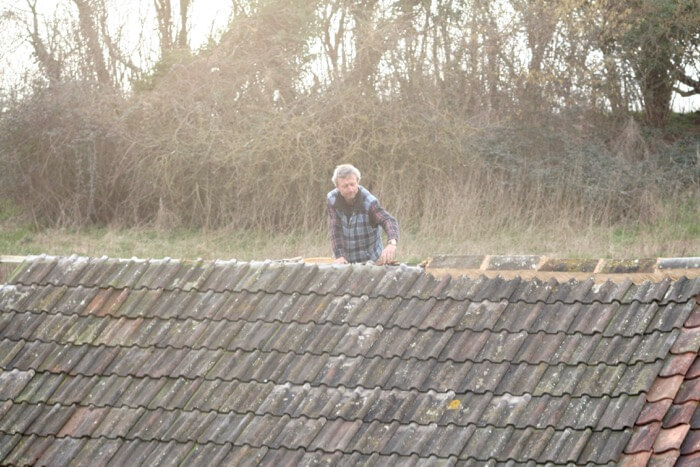

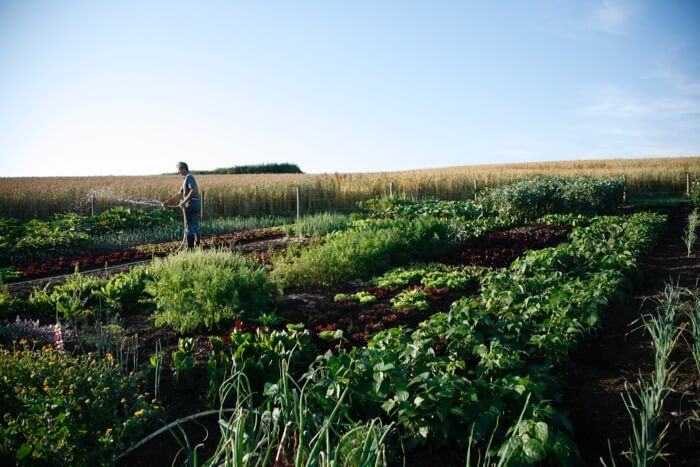
A new possibility
One evening in March 2003 I was encouraged by a local retailer, Phil Butler of Bill the Butcher in Bruton (now Spar), to grow and sell salad bags. These sold so well, initially in his shop and then to other local shops and pubs as well, that they became the main output from a garden which grew to an acre (4000sq.m) of permanent raised beds, mingled with a fair number of fruit trees.
I was on a fascinating, beautiful and tasty voyage of discovery to grow all the best salad plants for every season. My customers enjoyed salad bags containing ten or even twenty different leaves at any one time, constantly varying as temperature and daylight levels rose and fell. I also developed new and reliable ways of continually cropping lettuce and other salad plants, using the #charlesdowdingmethod.
Homeacres 2012-
Then came a huge change in the wet year of 2012: I separated from Susie and was lucky to find a new potential garden at Homeacres, six miles from Lower Farm. I had much help in the first steps at Homeeacres from my partner Steph who is a kitchen gardener and cook, with great knowledge of and skills for preparing food.
There was a rapid creation and evolution of Homeacres garden, transformed in six months from weedy wilderness to productive plot, without turning a sod. This amazed many visitors. See the monthly series of updates for snapshots of this process, starting with my first beds in December 2012.


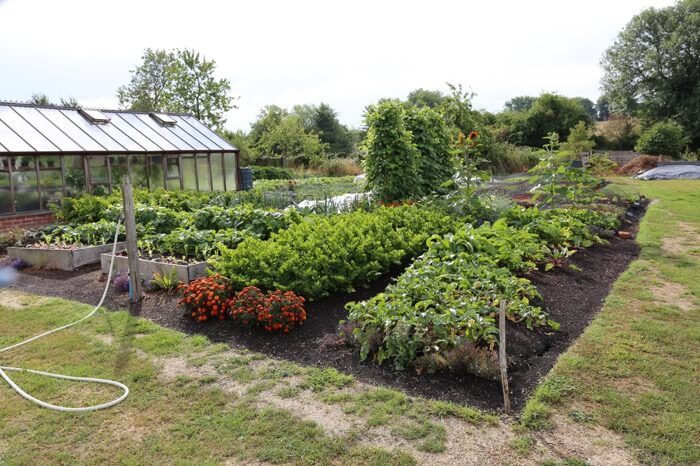
I had intended Homeacres as a teaching and writing garden, however with prompting from Steph, quite a few salad went into some new beds in the cold spring of 2013. From late April of the very first year I was already selling some salad and vegetables. At my various Open Days, hundreds of visitors have delighted in the smart abundance of Homeacres garden, and its many flowers and fruit trees too.
Videos
In 2013 I had the idea to create a video about the transformation at Homeacres, from weedy field to productive garden, all in just nine months. I had no idea whether this would be much noticed but my You Tube channel, from a slow start, has become a significant part of what I do here. The videos are a wonderful way to reach millions of people around the world. My most popular video, No dig with Charles Dowding, showing his fourth summer at Homeacres, has over 5 million views. Made in 2016, it has enduring popularity.For a summary of starting no dig, see this video of 2020.
Elizabeth White from Louisiana, by email 19/06/18
Thank you so much for your books and teachings and videos. I am just delighted with the way my garden looks and grows with the finished compost on top. Much to my extraordinary surprise, I’ve only had a very very few little baby weeds. Not enough even to count each week, so Thank You!!!
With my son Edward we also made a series of videos about gardening on a smaller scale than my main garden, starting with Small Garden (1), based on the plot below. It is 25sq.m and has 10-12 different vegetables growing from April to November: this video shows it in December. You can also see how much my plans change through the year.
- A plan is good, just as your starting point.

Talks, articles
Increasing interest in my gardens and methods have led to many articles for various magazines and lectures, including one to the RHS in Tokyo. I find that talks are a fantastic way to inform people and give clear understandings, with a chance to answer questions and chat afterwards too.
The Bleddfa Centre Newsletter, SE Wales January 2018
Our sold Out 'No Dig' Event was a Huge Success!
2018 got off to a fantastic start; last week when Charles Dowding gave a friendly, informative and inspirational ‘No Dig’ talk, which saw Hall Barn absolutely packed to full capacity! The feedback from attendees was excellent, including “Fantastic talk and exceptional food, well worth the 2 and a half hour drive” and “Beyond expectations!“.
A warm and heartfelt thank you to Charles for making the trip to Bleddfa, and thank you to the guests for coming along to be inspired by Charles and to share some supper together. We look forward to hearing how your gardening is progressing, and we hope to run similar events in the future.
Books
My first book on vegetable growing appeared in March 2007, and a second one on salad leaves in spring 2008.
These two books have sold over 50,000 copies, and have received encouraging reviews, and they are being updated all the time. My third book was Winter Vegetables published spring 2011 by Green Books, followed by The Vegetable Course Book for Frances Lincoln. This work, published in 2012, has more detail on starting out: mulching and improving soil, clearing weeds, and has a closer look at the virtues of no dig. I followed it in February 2014 with Charles Dowding’s Veg Journal in a month-by-month format (Frances Lincoln).
From Carrie on forum topic 14/07/18
To Charles and his wonderful advice.....my first growing season following your books and I am now reaping the benefits. 1 year ago my plot was 6 foot high in all manner of weeds but yet I conquered and am feeding the family throughout the season with much more to come!
In March 2014 Green Books published Gardening Myths and Misconceptions which tackles some of the misguided and contradictory advice common in the world of gardening. Its remit is to save the gardener time, by showing which jobs are unnecessary. Next in 2015, How to Create a New Vegetable Garden came out with Green Books.



By 2016 I was aware of gardeners' needs to know more about timings, and had the idea to self publish a Diary, which is also a manual of essential advice and timings for successful growing. It is selling steadily from this site, in shops and on Amazon, is exported to Chelsea Green in the USA, while the process of self publishing has been a steep learning curve for me. The Diary is currently in third edition 2019.
I have just bought your vegetable garden diary, and all I can say is wow, so inspiring, and full of detailed information, brilliant. I wish I had bought it years ago!!
I have made a couple of nice raised beds that are now productive, more to follow, now I have a decent compost heap that is rotting down behind the peas and beans!!
Thanks again for all your positive comments, you are a real inspiration! (Philip Hirst, Ireland email, 23.07.18)
April 2017 saw publication of No Dig Organic Home and Garden (Permanent), written by Steph and myself. Sales have been phenomenal. The book is a two-in-one, with 90000 words describing the whole process of producing, picking, storing and eating your food. Plus there are tips on potions, flowers, sourdough bread and more.
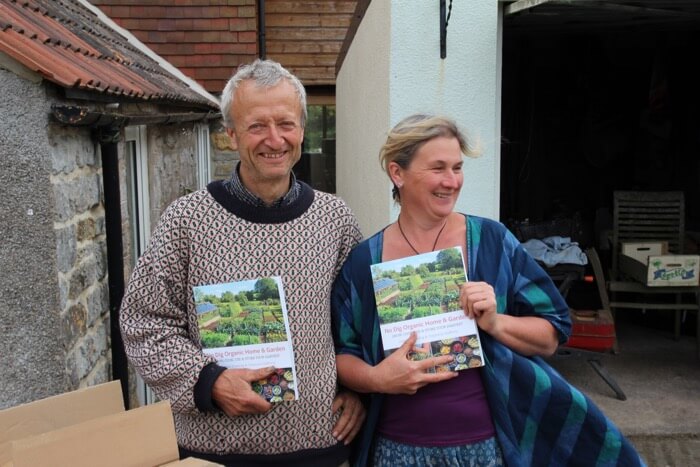
RHS review The Garden p.93 November 2017, by Jim Buckland of West Dean Gardens, Sussex
Although I have been gardening professionally for 45 years, I found this book enlightening, thought provoking and immensely practical in equal measure. I am confident that if this were the first volume to grace the shelves of a gardening novice, it would be equally stimulating and useful, and would ensure a smooth start to a growing life. It does exactly what the title suggests it will do, and does it with clarity, humour and immense practicality.
Despite being an enthusiast for his take on growing practice, he is not a fanatical ideologue but a true empiricist. His arguments are based on the outcome of years of rigorously recorded experimentation and observation, forming the foundation for all of his recommendations. Charles is a man driven by a desire to find the most effective and environmentally benign method of producing as much food from a small area as is feasible. He then converts it to good domestic use with the able assistance of his partner and co-author Stephanie Hafferty.
Since then I have self published two more books, and continue to write and publish the annual Calendar of sowing dates. There is huge interest in both no dig, and in being more successful at growing vegetables and the latter reason is why I wrote and published Skills for Growing in 2022. This is available both as a book and an online course, do have a look in the webshop.The three online courses have become a big feature of my work. They are a fantastic way to explain in some detail, the methods I recommend. I can illustrate both with words and videos, together with a lot of photos often in sequence and with explanatory captions.
Reaching out
I am often consulted for advice on creating, maintaining and improving vegetable gardens and allotments. The many talks which I give to gardening clubs, fund raising events, community meetings, allotment societies and literary festivals are received with enthusiasm. See the Events page for details. I can open your mind to new possibilities, and the photographs of my gardens show the beauty you can create with vegetable growing.












































0 comments